Costa Rica, a small country nestled between Nicaragua and Panama, is a hidden gem in Central America. Known for its lush rainforests, stunning beaches, and vibrant culture, Costa Rica is a paradise for eco-tourists. The country’s commitment to sustainability and conservation has made it a global leader in eco-tourism. With over 25% of its land protected as national parks and reserves, Costa Rica offers a unique opportunity to explore one of the most biodiverse regions on the planet.
Costa Rica’s commitment to sustainability is not a recent development. The country abolished its army in 1949 and redirected the funds towards education, healthcare, and conservation. This commitment to peace and sustainability is deeply ingrained in the Costa Rican culture, and is reflected in their motto “Pura Vida” or “Pure Life”. This philosophy extends to every aspect of life in Costa Rica, from the food they eat to the way they travel.
Costa Rica’s Commitment to Sustainability and Conservation
Costa Rica’s commitment to sustainability and conservation is unparalleled. The country has set ambitious goals to become carbon neutral by 2050 and is already generating over 98% of its electricity from renewable sources. Costa Rica’s commitment to conservation is evident in its extensive network of national parks and reserves, which cover over a quarter of the country’s land area.
The government’s commitment to sustainability extends beyond conservation. Costa Rica has implemented strict regulations to ensure that tourism development is sustainable and benefits local communities. These regulations include limits on the size and location of hotels, requirements for waste management and water conservation, and incentives for businesses to adopt sustainable practices.
If you are a smoker, Costa Rica’s anti-smoking laws are some of the strictest we have seen. Smoking is not permitted in any public or private buildings and most places even outside. The only place where we saw anyone smoking was quite aways away from buildings in the parking lots. Even then, there were not many (Costa Rica has cut their smoking population by half down to less than 10% of the country).
The one area that stuck out to us was on our way from Monteverde to Manual Antonio, we came across miles of palms. They were for palm oil and the native species of plants and trees were replaced with rows and rows of palm trees. This deforestation has already occurred to some of the most biodiverse forests in the world, and it was a shock to see that it is occurring in Costa Rica.
Exploring Costa Rica’s Biodiversity: A Haven for Wildlife Enthusiasts
Costa Rica is a haven for wildlife enthusiasts. Despite covering just 0.03% of the Earth’s surface, Costa Rica is home to 5% of the world’s biodiversity. This includes over 500,000 species, many of which are endemic to Costa Rica. This incredible biodiversity is a result of Costa Rica’s varied ecosystems, which include tropical rainforests, cloud forests, mangroves, coral reefs, and dry forests.
Wildlife enthusiasts can spot a wide variety of animals in Costa Rica, including sloths, monkeys, toucans, and jaguars. The country is also a birdwatcher’s paradise, with over 900 species of birds (one of our guides has seen over 500 species and still looking everyday to increase that number). Costa Rica’s commitment to conservation ensures that these species are protected and that their habitats are preserved for future generations.
And though the parks are great, you don’t have to travel far to see the magnificent wildlife. One of our best sloth encounters was in a tree near the main road in Fortuna. Our best Toucan encounter was at a restaurant off the tourist trail sitting having a drink and we saw howler monkeys on the road as we drove from Fortuna to Monteverde. Have your camera ready wherever you go in Costa Rica.
We do have to mention about sloth and wildlife viewing tours. There are some people that have relocated sloths and charge people to see them in their private areas. Though illegal now, they were grandfathered in before the new laws took place. Over time, these sloths and other animals will not have the natural diversity as they procreate. Go to a national park or encounter them in the wild while hiking, biking or driving. It is more exciting and more authentic and better for the animals.
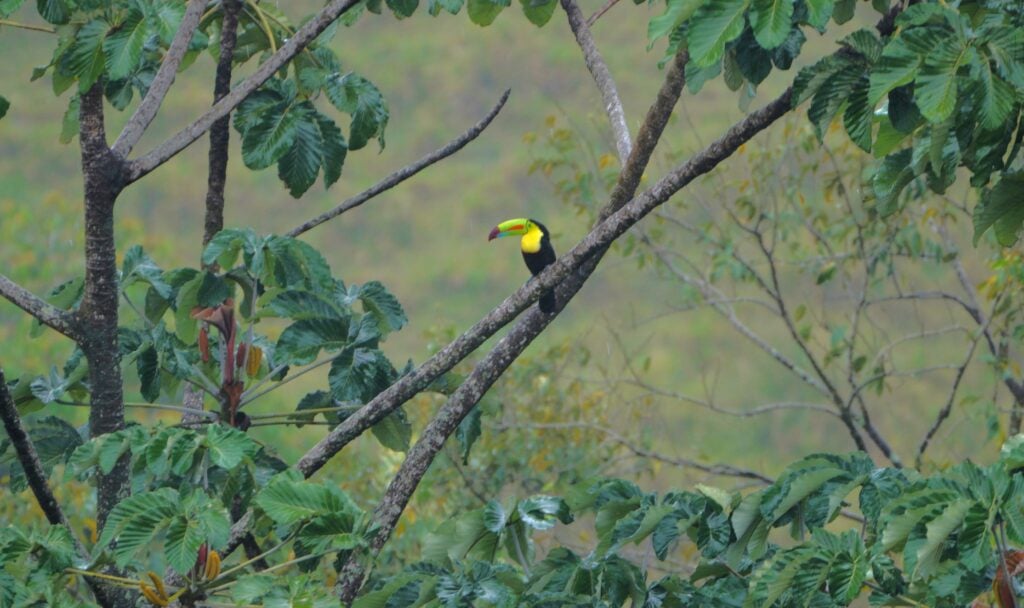
We saw this Toucan while sitting having a drink off the tourist trail. You do not have to go to a park to experience Costa Rica’s wildlife.
Costa Rica’s National Parks: A Showcase of Ecological Diversity
Costa Rica’s national parks are a showcase of the country’s ecological diversity. The country has 28 national parks, each with its unique ecosystems and wildlife. These parks offer a range of activities for eco-tourists, from hiking and birdwatching to snorkeling and white-water rafting.
One of the most popular national parks is the Corcovado National Park, which National Geographic has called “the most biologically intense place on Earth”. This park is home to over 400 species of birds, 140 species of mammals, and 116 species of amphibians and reptiles. Other notable parks include the Tortuguero National Park, known for its sea turtle nesting sites, and the Monteverde Cloud Forest Reserve, known for its unique cloud forest ecosystem.
Another national park we enjoyed was Manuel Antonio on the Pacific coast. Filled with wildlife like sloths, monkeys and birds you can also visit one of the most beautiful beaches in the world. It is a small park and tends to get overcrowded, but we visited in the afternoon and there were far fewer crowds than in the morning. Just be ready as it can be very hot and humid.
Another tip is always hire a registered guide. You will see so much more than trying to find the wildlife on your own or with a guide that is not registered with the Costa Rica Tourist Authority. Our guides made the difference on our trips to Costa Rica.
Eco-Friendly Accommodations: Staying Green in Costa Rica
Staying green in Costa Rica is easy, thanks to the country’s wide range of eco-friendly accommodations. These accommodations range from luxury eco-lodges to budget-friendly hostels, all committed to sustainability and conservation. Many of these accommodations are located within or near national parks and reserves, offering guests a unique opportunity to experience Costa Rica’s biodiversity firsthand.
Eco-friendly accommodations in Costa Rica often incorporate sustainable practices such as solar power, rainwater collection, composting, and organic gardening. Many also offer eco-tours and activities, such as birdwatching, hiking, and wildlife spotting. Staying at these accommodations not only reduces your environmental impact but also supports local communities and conservation efforts.
Adventure Tourism in Costa Rica: From Ziplining to White Water Rafting
Costa Rica is a paradise for adventure tourists. The country’s diverse landscapes offer a wide range of activities, from ziplining through the rainforest canopy to white-water rafting down raging rivers. These activities not only offer a thrilling experience but also a unique way to explore Costa Rica’s biodiversity.
Ziplining is one of the most popular adventure activities in Costa Rica. This activity originated in Costa Rica as a way for scientists to study the rainforest canopy. Today, ziplining tours offer tourists a bird’s eye view of the rainforest and its wildlife. Other popular adventure activities include white-water rafting, surfing, hiking, and wildlife spotting.
Costa Rica’s Volcanoes: A Unique Eco-Tourism Attraction
Costa Rica’s volcanoes are a unique eco-tourism attraction. The country is home to over 200 volcanic formations, six of which are active. These volcanoes offer a range of activities for eco-tourists, from hiking and birdwatching to hot springs and mud baths.
One of the most popular volcanoes is the Arenal Volcano, which erupted regularly until 2010. Today, tourists can hike through the Arenal Volcano National Park, soak in the hot springs, or explore the surrounding rainforest. Other notable volcanoes include the Poas Volcano, known for its stunning crater lake, and the Rincon de la Vieja Volcano, known for its unique mud baths and hot springs.
Arenal Volcano is the main attraction in Fortuna. We hiked through the rain forest and crossed 6 hanging bridges. This gave us a great opportunity to photograph birds at their own level. Also, Kati loved soaking in the hot springs that are available along side the road. All you do is pay for parking and within minutes you are immersed in a naturally warm river. It was wonderful.
Sustainable Dining in Costa Rica: Farm-to-Table Experiences
Sustainable dining is a key part of the eco-tourism experience in Costa Rica. The country’s fertile soils and diverse ecosystems produce a wide variety of fresh fruits, vegetables, and seafood. Many restaurants and hotels in Costa Rica offer farm-to-table experiences, using locally sourced ingredients to create delicious and sustainable meals.
Farm-to-table experiences in Costa Rica often include a visit to a local farm, where tourists can learn about sustainable farming practices and even pick their own ingredients. These experiences not only offer a unique culinary experience but also support local farmers and sustainable agriculture.
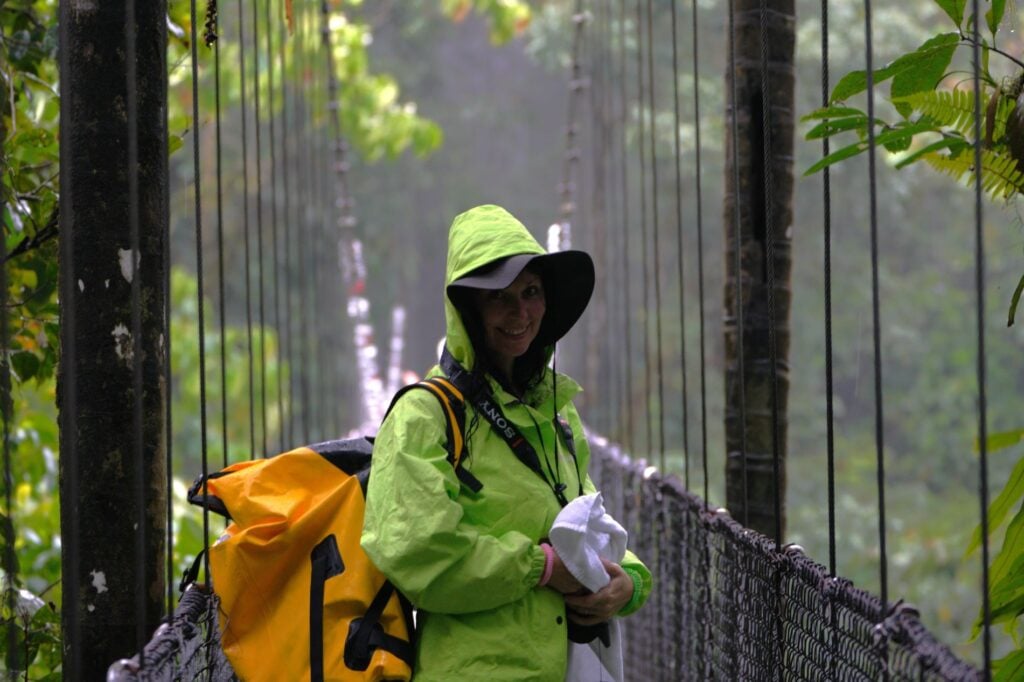
We had hard rain on some of our days. Don’t let that discourage you. Protect your equipment and still head out. It is one of the best times to encounter wildlife.
Community-Based Rural Tourism in Costa Rica: Supporting Local Economies
Community-based rural tourism is a growing trend in Costa Rica. This form of tourism involves local communities in the planning, management, and execution of tourism activities. This not only ensures that tourism development is sustainable and benefits local communities but also offers tourists a unique and authentic experience.
Community-based rural tourism in Costa Rica often involves homestays, where tourists stay with local families and participate in daily activities. This can include cooking traditional meals, farming, or participating in local festivals. These experiences not only support local economies but also promote cultural exchange and understanding.
Planning Your Eco-Tourism Trip to Costa Rica: Tips and Recommendations
Planning your eco-tourism trip to Costa Rica can be a rewarding experience. Here are some tips and recommendations to help you plan your trip:
1. Choose eco-friendly accommodations: Look for accommodations that are committed to sustainability and conservation. This can include eco-lodges, hostels, or homestays.
2. Participate in sustainable activities: Choose activities that are sustainable and benefit local communities. This can include hiking, birdwatching, farm-to-table experiences, or community-based rural tourism.
3. Respect the environment: Follow the principles of Leave No Trace. This includes staying on marked trails, disposing of waste properly, and respecting wildlife.
4. Support local economies: Buy local products and services. This not only supports local economies but also reduces your environmental impact.
5. Learn about the culture: Take the time to learn about Costa Rica’s culture and history. This can enhance your understanding and appreciation of the country.
Our Final Word
Costa Rica is a paradise for eco-tourists and if you are a birder, there is no better place. The country’s commitment to sustainability and conservation, its incredible biodiversity, and its wide range of eco-friendly accommodations and activities make it a must-visit destination for anyone interested in eco-tourism.
There is wildlife at every turn, and you do not have to go to the parks to encounter incredible birdlife and mammals. The landscape is beautiful. But the country is filled with Americans and most people speak English. So, if you are looking for something off the grid, most of Costa Rica is not it. You have to make your own adventures and escape the tourist routes a bit and Costa Rica will come alive.
So why wait? Start planning your eco-tourism trip to Costa Rica today!
Related Posts
Birding Paradise: Discovering the Ultimate Countries for Birdwatching Enthusiasts
Birding Paradise takes you on a captivating journey to the ultimate countries for birdwatching enthusiasts. From the lush rainforests of Costa Rica to the vast plains of Kenya, this article unveils the most breathtaking birding destinations on Earth. Packed with stunning photographs and expert tips, it is a must-have guide for every avid birder.
The Human Connection: Why We Should Care About People We Meet on Our Travels
“The Human Connection” explores the profound impact of human interactions during travels. It emphasizes the importance of embracing local cultures, understanding diverse perspectives, and forming meaningful connections. This post encourages readers to see beyond tourist spots and delve deeper into the heart of the places they visit, through the people they meet.
The Ultimate Guide to the Best Christmas Destinations
Discover the magic of the holiday season with our ultimate guide to the best Christmas destinations. Explore enchanting markets, festive light displays, and unique traditions around the world. From snowy European towns to tropical beach retreats, we’ve got the perfect holiday travel suggestions for every type of traveler.

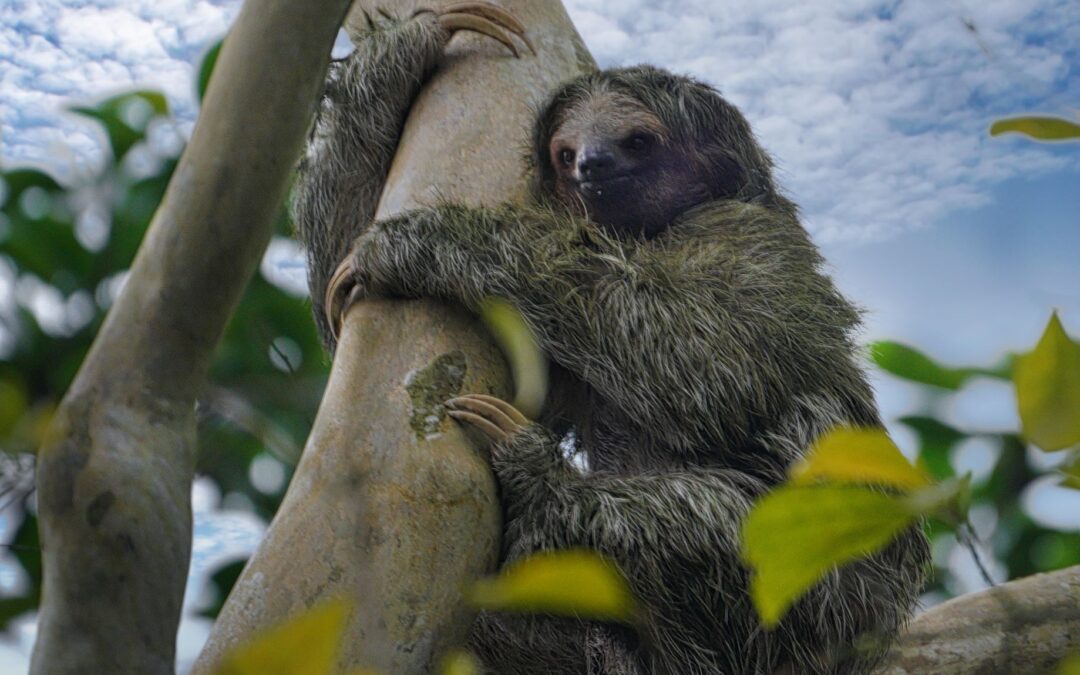

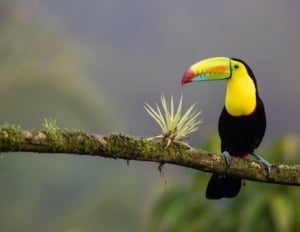
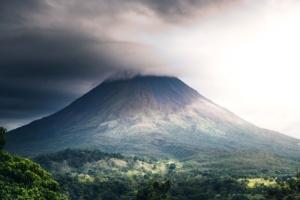
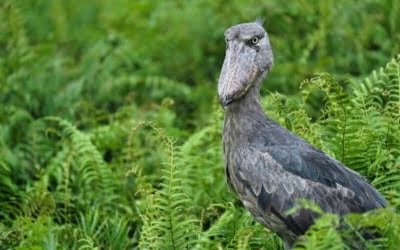



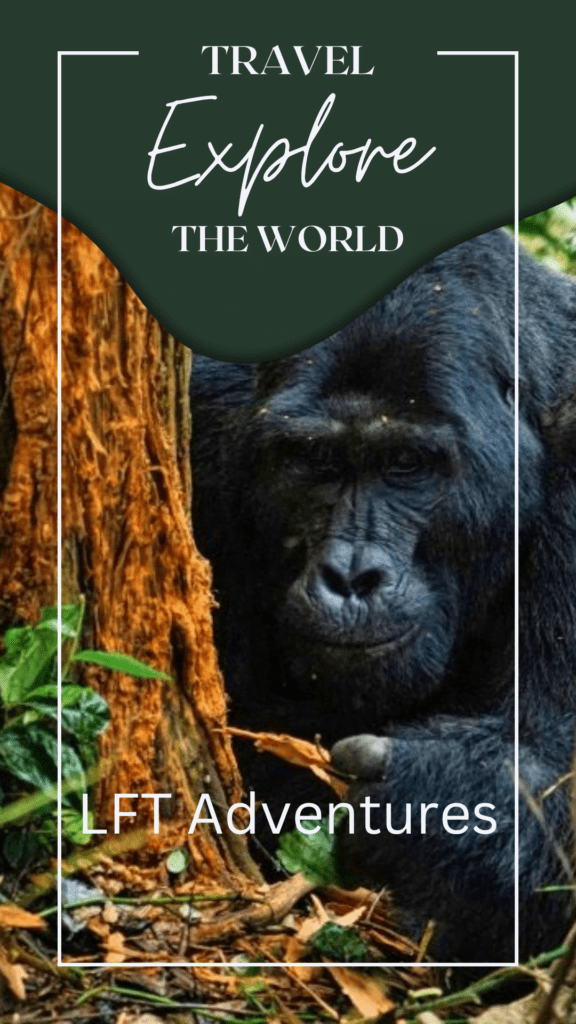
0 Comments